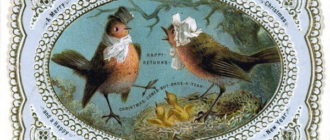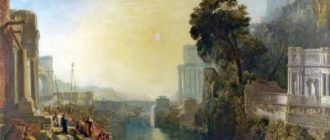- The painting Portrait of the Arnolfini Couple by Jan van Eyck is an illustrious masterpiece full of hidden symbols and mysteries
- Jan van Eyck is a famous Dutch portrait painter who worked during the early Northern Renaissance in the 14th-15th centuries.
- Followers of the third version believe that Jan van Eyck portrayed not Arnolfini, but himself and his wife Margarita.

The Arnolfini Portrait is a painting by Jan van Eyck in 1434. The artist depicted a married couple at home and for the first time placed two characters in a portrait at once.
The man stands facing the audience, the woman’s figure is slightly expanded. In the center of the composition are their joined hands. The heroes are dressed in luxurious clothes that correspond to the fashion of the time. The man’s dark purple outer dress is padded with fur, and a black hat is on his head. His face is thin and elongated, his eyes are closed, he looks focused and immersed in himself.
The painting Portrait of the Arnolfini Couple by Jan van Eyck is an illustrious masterpiece full of hidden symbols and mysteries
The girl is pretty, but her face lacks individuality, bright characteristic features. She represents a collective image of female beauty. At first glance, it seems that the heroine is in an interesting position. This impression arises from the cut of the dress and the palm pressed to the stomach.
However, it is not clear whether a woman is pregnant. In the days of Jan van Eyck, a high-waisted dress with a train in the front was considered a squeak of fashion. Perhaps the girl is simply supporting a too long hem. A small dog is spinning at the feet of the couple, and a little further away there is a wooden shoe, which the heroes took off when they entered the room.
In the mirror, which was a luxury item at that time, two more figures are reflected. The whole furnishings are written down to the smallest detail and testifies to the material well-being of the spouses: a canopy bed, a heavy chandelier, an oriental carpet, juicy fruits on the table and partial glazing of the window. The painting is executed with phenomenal, almost photographic accuracy. The artist did not miss a single detail. Even in the rosary hanging to the left of the mirror, you can see a dark thread on which beads are strung.
Title of the painting: “Portrait of the Arnolfini Couple” (Dutch. Portret van Giovanni Arnolfini en zijn vrouw).
Author: Jan van Eyck (1390-1441).
Year of writing: 1434
Size: 81.8 x 59.7 cm.
Style: Realism.
Genre: Group portrait.
Technique: Oil.
Material: Oak board.
Location: London National Gallery, UK.
Jan van Eyck is a famous Dutch portrait painter who worked during the early Northern Renaissance in the 14th-15th centuries.
He was one of the first to use oil paints and portrayed the spouses not alone, as was customary, but together in an everyday setting. It was the oil that helped the painter create an amazingly realistic masterpiece. By applying one stroke on top of another, Jan van Eyck achieved an amazing depth of color, was able to give all objects a volume close to three-dimensional.
The history of the work to this day raises many questions, conjectures and disputes. Whom did the painter capture? What was the reason for the creation of the picture? According to one version, Jan van Eyck portrayed a wealthy merchant Arnolfini and his wife on their wedding day.
This is confirmed by records in old inventory books. According to another version, the portrait was made not in honor of the wedding, but in memory of the deceased wife. Hence the generalized image of the heroine, who could not serve as a model for the artist. This version is indirectly confirmed by the elements of the interior: the only candle in the chandelier burns over the husband, miniatures on the mirror frame depict Christ before death from the man’s side, and then from the wife’s side.
Followers of the third version believe that Jan van Eyck portrayed not Arnolfini, but himself and his wife Margarita.
As evidence, a self-portrait of the artist and a portrait of his wife are cited, which have a clear resemblance to the couple depicted in the painting, as well as a figurine of St. Margaret on the headboard.
Some art historians are inclined to view this work as documentary evidence of the completion of a legal transaction a marriage contract. Because the inscription in the center of the wall: “Jan van Eyck was here” is more consistent with the stroke of the witness under the document than the autograph of the artist at his work.
The painting “Portrait of the Anrnolfini Couple” by Jan van Eyck has for many centuries made you admire the talent of the master of painting and excites the imagination with its history. The masterpiece traveled through private collections for many years, until in the middle of the 19th century it ended up in the London National Gallery, where it is still located.






